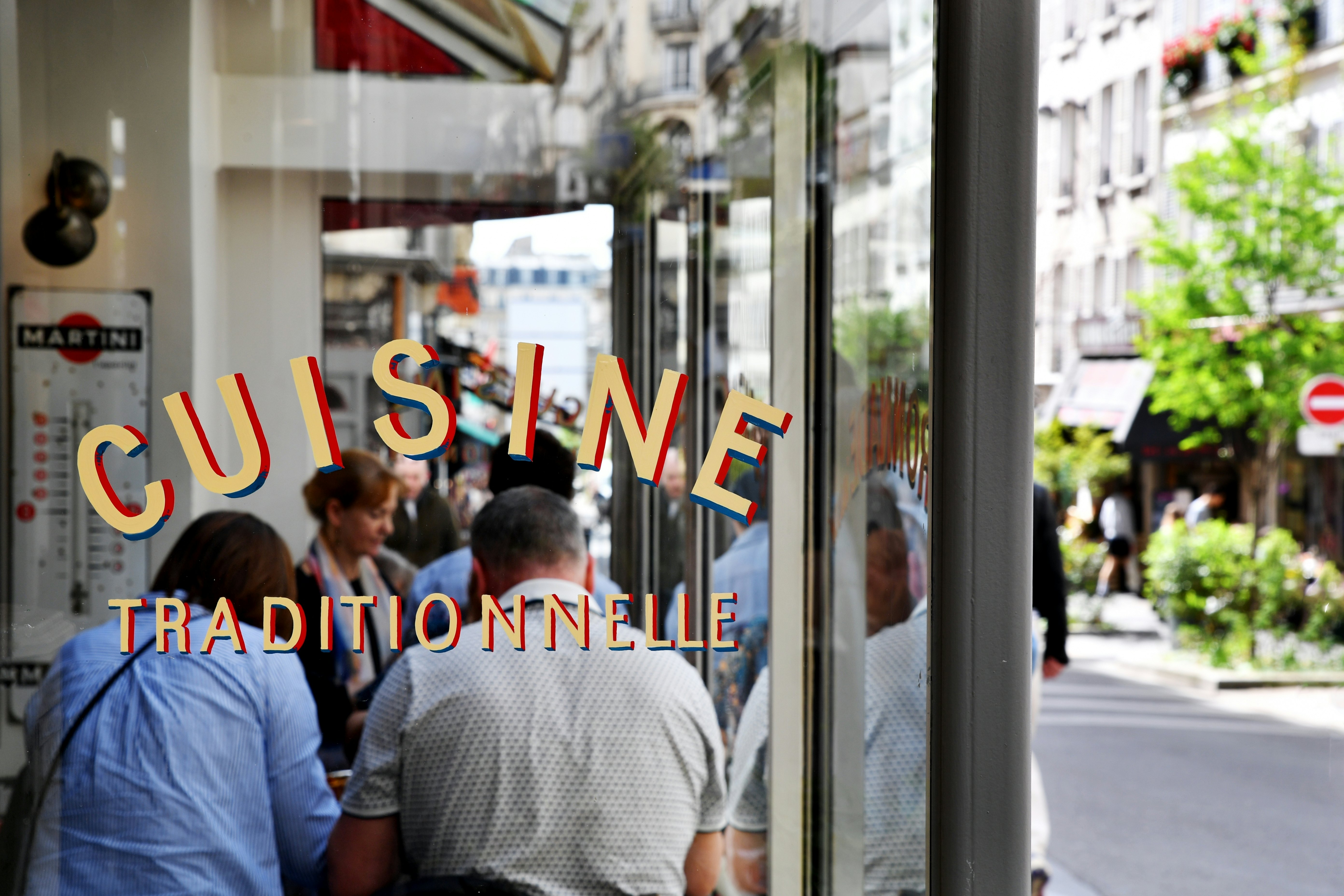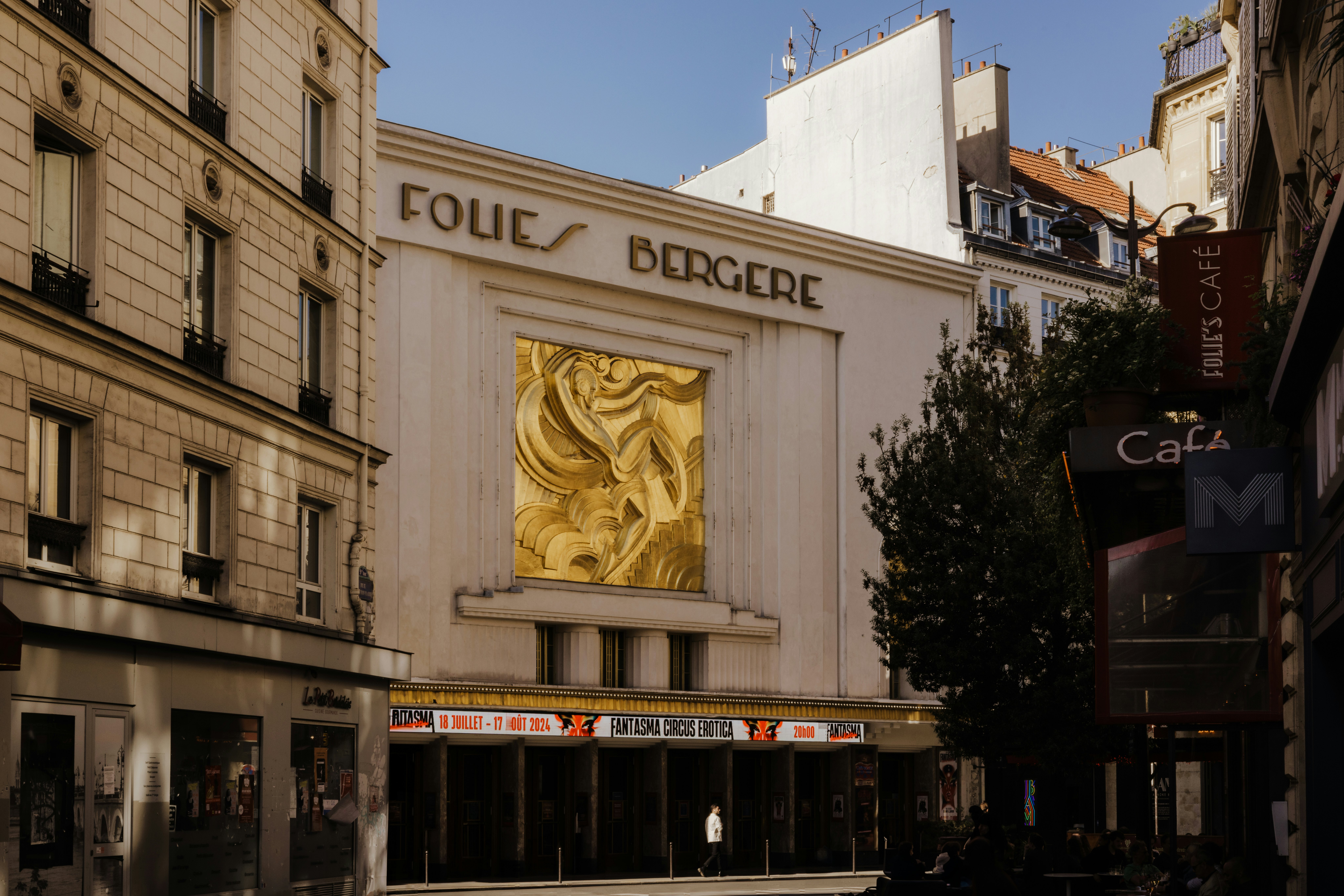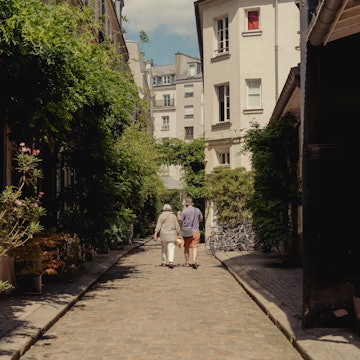
Explore Paris' 9e arrondissement with Lonely Planet's neighborhood guide

Jul 31, 2025 • 8 min read

The Palais Garnier opera in Paris' 9e arrondissement. Alexander Spatari/Getty Images
Paris’ 9e (neuvième) arrondissement – the ninth city district – stretches between the northern 18th arrondissement, with the Basilique du Sacré-Cœur and crimson sails of the Moulin Rouge, and the more central 2nd arrondissement. Despite being relatively small, the 9e contains an incredible variety of activities and history, and is an ideal place to stay if you’re looking for a feeling of lived-in Paris without being too far from the center.
SoPi, as the locals call the area South of Pigalle, has retained some atmosphere from its cabaret history with a vibrant bar and club scene. When you walk down the arrondissement from these bacchanalian heights, you pass restaurants, homes and independent businesses, before arriving at the elegant riches of the Palais Garnier opera house and grands magasins (department stores) below.
The 9e also has a rich artistic history, concentrated in the Nouvelle Athènes area, which left behind a scattering of museums, performance venues, and galleries. By day, the well-to-do streets have a quieter, familial ambiance. At night, it comes alive with youthful revelry, lit by the glow of neon signs and the beckoning glint reflecting from brass bar tops.

Getting to and around the 9e arrondissement
This neighborhood is crisscrossed by metro lines, so you have a plethora of stations to choose between. From Orly take the line 14 to Madeleine and change for either the 8 to Grands Boulevards, the bottom of the arrondissement, or the 12 to Pigalle, the top of the arrondissement. From Charles de Gaulle it is easiest to take the RER B train to either Gare du Nord, for the top of the arrondissement, or Chatelet les Halles, for the bottom, and then walk.
Metro
Grands Boulevards stop is perfect to start at the bottom of the hill and explore covered passageways, while Chaussée d'Antin – La Fayette will drop you outside shopping destination, Galeries Lafayette. If you’d rather start near the top of the hill, Pigalle is your best pick to walk down from towards rue des Martyrs. Finally, Opéra will deliver you to the doorstep of the Palais Garnier.
On foot
This is a medium-sized arrondissement, which is easy to do on foot and well worth the steps to enjoy the chic boutiques and elegant facades along quieter streets.
Bike
Although this arrondissement can easily be cycled, it is only really fun when going down the hill, so choose your start point and destination accordingly.

Where to stay
In the 9e, the greatest challenge is not finding somewhere to stay, it is choosing between the multitude of options. However, like most of Paris, it is heavily weighted towards the pricey end of the spectrum.
Save
The BVJ Opéra Montmartre is an auberge de jeunesse (youth hostel) in a stunning hôtel particulier (private mansion). Beds are from €19 (US$22) per night, including a simple breakfast, however you can only pay in cash.
Spend
Hoy is an earth-toned oasis of wellness with yoga classes, sustainable products, and purified water and air. Alternatively, Hotel Rochechouart has chocolatey, warm interiors with retro fittings that invite you to indulge. But the real draw is its rooftop bar, Maggie, with 360-degree views of Paris.
Spend more
Slumber blissfully in the decadence of the belle époque at the Maison Souquet. Named for Madame Souquet, who ran a brothel in the building from 1905–07, this hotel is as luxurious as it is theatrical. Expect mirrors, sensual fabrics, gilded surfaces and delicious cocktails.
Where to get coffee
Most visitors gravitate to the well-located KB coffee for its streetside seating at the top of rue des Martyrs. But, getting a seat can be a challenge on weekends and there are plenty of other interesting options. Tucked away on rue Manuel is coffee shop and artisanal biscuiterie, Mon Loup. It offers regularly changing coffee beans and traditional French biscuits with vegan options. Visit Komorebi to enjoy your coffee with a slice of Japanese fraisier cake bursting with strawberries and cream. Dalda-li specializes in crème de marron lattes and, yakgwa, Korean sweets, or squeeze into Les Crèmes for light bites and delicious cafe crèmes.

Where to eat
Because the 9e is a well-integrated mix of residential and professional, the food scene is particularly rich and it’s hard to pick a bad spot to eat. Across the arrondissement, French classics rub shoulders with flavors from Japan to Venezuela. During the week, look for lunch menus with reduced prices.
Union Boulangerie and Leonie Bakery are ideal to grab a morning pâtisserie or lunch on the go. Le Comptoir des Madeleines bakes madeleines with burnished, crisp exteriors and perfectly fluffy interiors. It makes between 500 and 700 every day, with fresh batches appearing out of the ovens at 10 minute intervals.
Get handheld bites for lunch from Bob de Tunis and Komé Komé. Bob de Tunis, at 10 rue Richer, specializes in Tunisian fricassée, a type of sandwich filled with mechouia salad, harissa, potatoes and tuna. Komé Komé offers a rotating range of onigiri, rice balls and inari.
For French dining, try DAME. It was a finalist in the world egg mayonnaise competition and has a weekly egg mayonnaise flavor that is unmissable. Its almost-winning combination is a herb mayonnaise with lardon breadcrumbs, while a recent summery version includes a chive mayonnaise and artfully placed croutons. Buvette and Les Canailles both provide a modern classic bistro ambience and menus to match. Kémia features seasonal dishes with a Mediterranean touch. ASPIC has creative tasting menus, but won’t cater to vegetarian, vegan or seafood-free diets.

What to do
Discover the oil painting process of Gustave Moreau at his residence-turned-museum, the Musée National Gustave Moreau. Moreau’s large-scale unfinished paintings reveal the multitude of layers that went into every canvas and don’t miss the chance to flip through his delicate practice drawings hidden away behind curtains along the walls of the studio.
The most unusual and musical museum in the area is the PHONO Museum, which covers the history of inventions that record and play sound. This tiny space is only open on Fridays and Sundays from 10am–6pm, but is worth making time for. There aren’t many information cards, but the curator, Jalal Aro, is incredibly knowledgeable and speaks excellent English. If you ask, he will explain the history of each object and you may even get a chance to hear the voices of long-forgotten singers crackling out of some gramophones.
Walk down rue des Martyrs and soak up the atmosphere of the arrondissement. It’s most enjoyable at the weekend when the merry-go-round spins neatly-dressed French children, or when a brocante (flea market) spills along av Trudaine. If it’s raining, stroll the covered passageways Verdeau and Jouffroy. Verdeau is slightly more rundown, but full of deliciously dusty book shops and antiques alongside the popular Korean brunch spot, Keopi. Passage Jouffroy is more polished, and therefore touristy, but has a beautiful selection of antique engraved prints to browse.

Where to shop
Rue des Martyrs has some boutiques, but for serious shopping head to Galeries Lafayette and Printemps. These two original Parisian grands magasins have not entirely lost their lustre, but are extremely crowded – be prepared to squeeze your way through bodies on the lower floors and get lost navigating the neverending escalators. The stained-glass ceiling in the Galeries Lafayette is worth braving the crowds for, as is their rooftop bar in the summer. Even if you don’t plan to stop for a drink, you can still go up to enjoy views over the city.
Find a new signature scent at Detaille, a Parisian brand that celebrated its 100th anniversary in July 2025 with an award from the city. Enjoy a selection of classic sweet treats from another Parisian institution, À la Mère de Famille. The glowing boutique at number 35 rue du Faubourg-Montmartre is the oldest chocolate shop in the city, opened in 1761.
My favorite thing to do in 9e neighborhood
I love to wander down the arrondissement scouting for tiles and decorated facades. Starting from Pigalle and weaving down around rue du Faubourg-Montmartre, some of my favorites are the alphabet tiles on the Collège Paul Gauguin along the rue Louise-Émilie de la Tour d'Auvergne and number 11 in cité des Malesherbes, if you can get into this private road. A few steps into the 10e, at 14 rue d'Abbeville, is an art nouveau delight constructed in 1901 by Alexandre and Edouard Autant with celadon-colored, flamed stoneware vegetation bursting luxuriantly from every surface.
In between, I’ll pick up a pistachio babka from Babka Zana or a bite-sized sablé from Château Sablé and stop into some of the smaller shops like eco-boutique, Oyat, and Corsican deli, Missià.

After dark
This arrondissement is a paradise for theater and music lovers. Palais Garnier with its dream-like ceiling painted by Marc Chagall, gilded interior, and array of sculptures is the most famous and hosts operas, ballets and recitals. The distinctive art deco facade of the Folies Bergère contains a more varied calendar of events. For performing arts, try the Théâtre La Bruyère and Théâtre Fontaine.
Along rue Frochot, you can join the chic 20-somethings spilling out onto the pavement from buzzing cocktail bars or, if you prefer to sip an excellent cocktail on a quieter terrasse, head to Classique. Lower down the hill, the Dissident Club is a bar, event space and haven for dissidents fighting injustice.
For entertainment, glam-rock bar Sister Midnight hosts cabaret shows on Saturdays and drag shows every other Thursday, while La Nouvelle Eve is a fractionally more affordable alternative to Le Moulin Rouge.
What to know
Because the 9e is a largely residential neighborhood, many things are closed on Mondays including bakeries, restaurants and boutiques. To get a real sense of the area, it’s best to visit later in the week.















